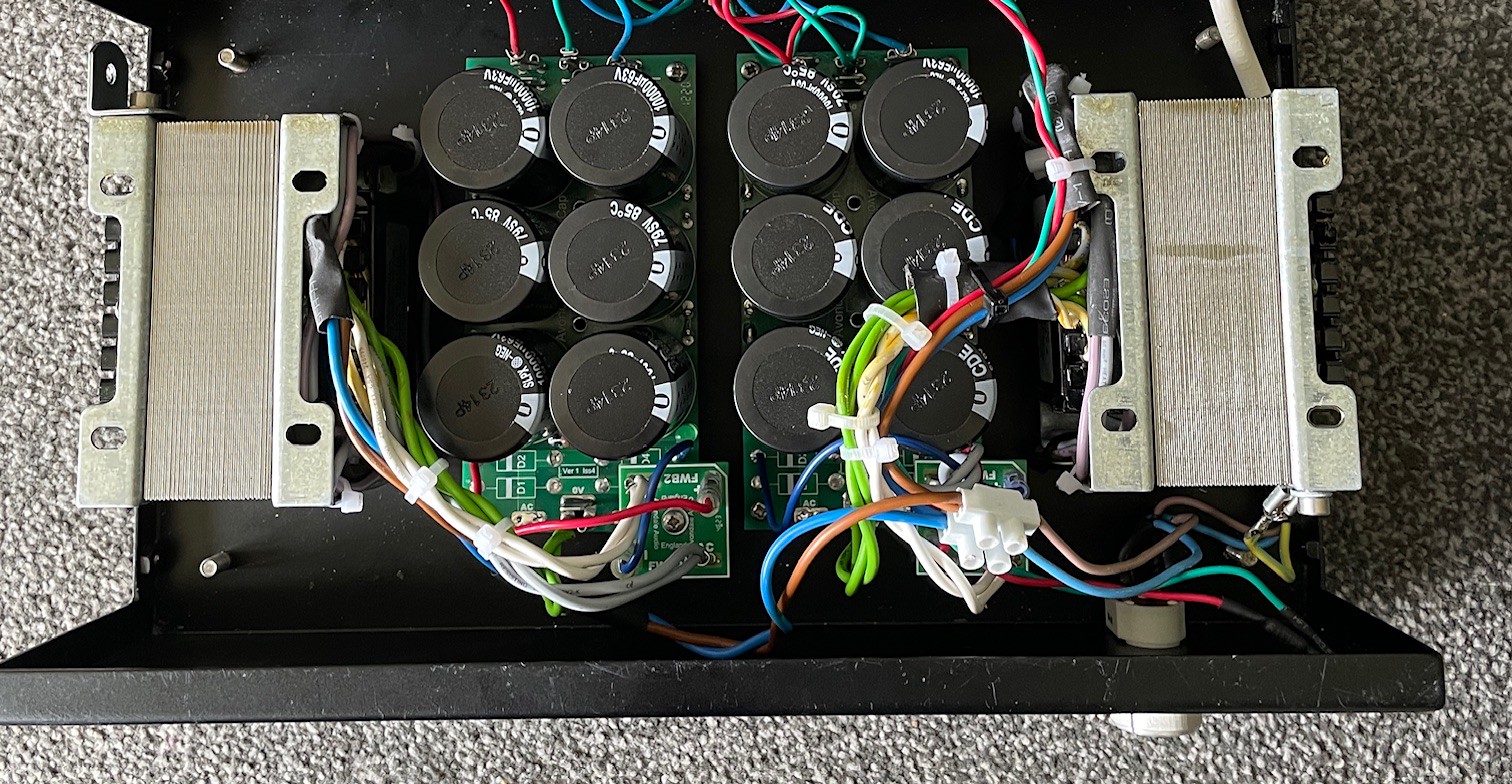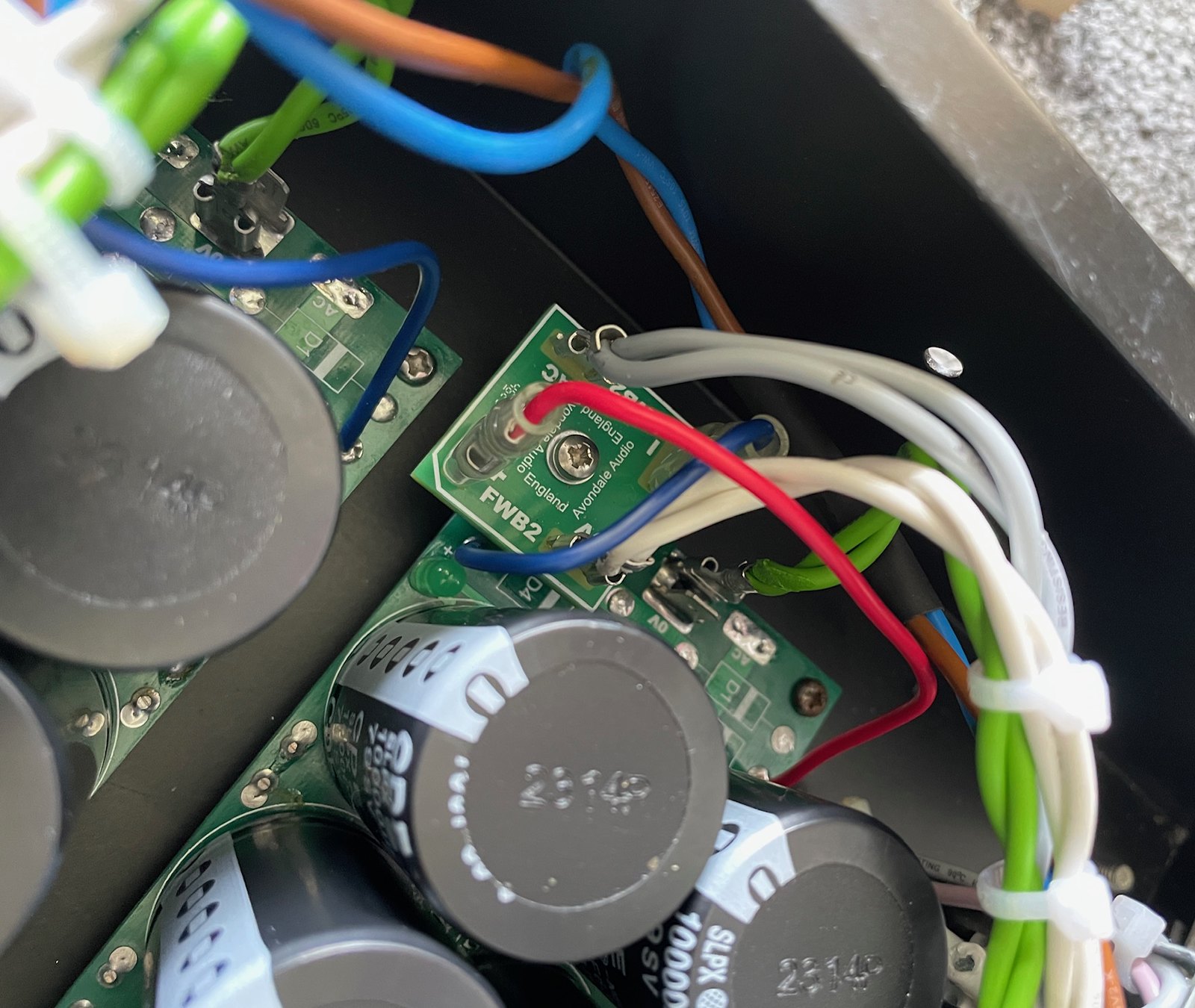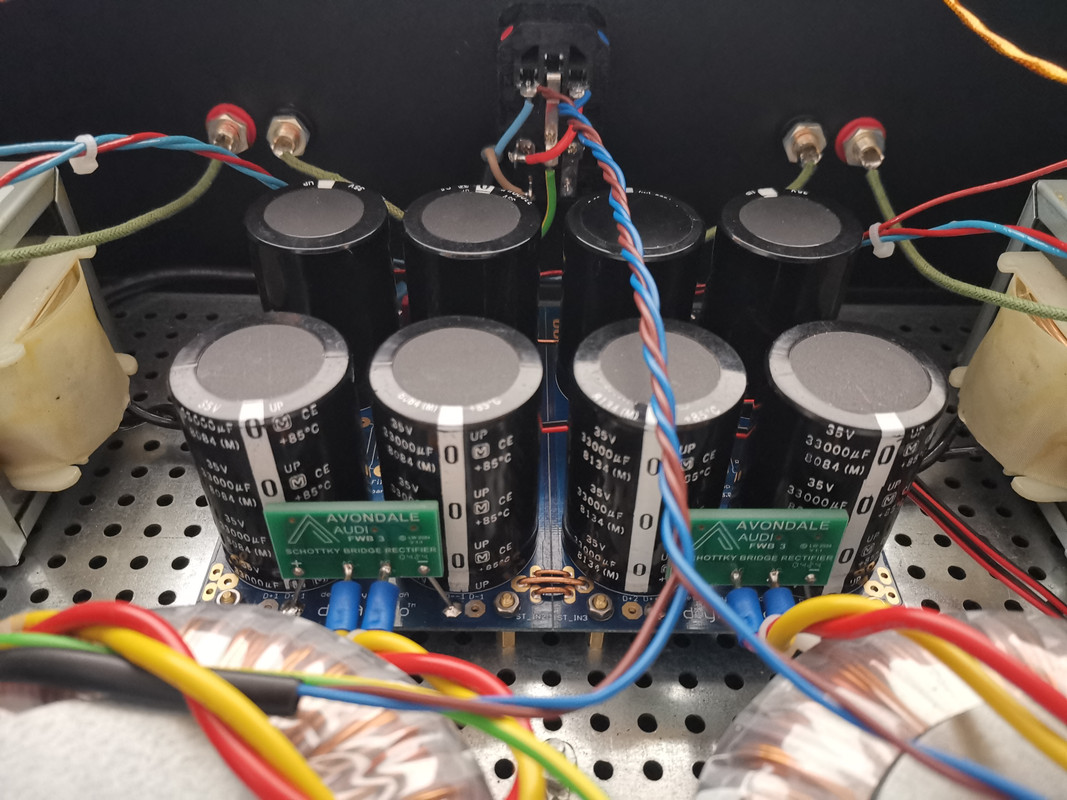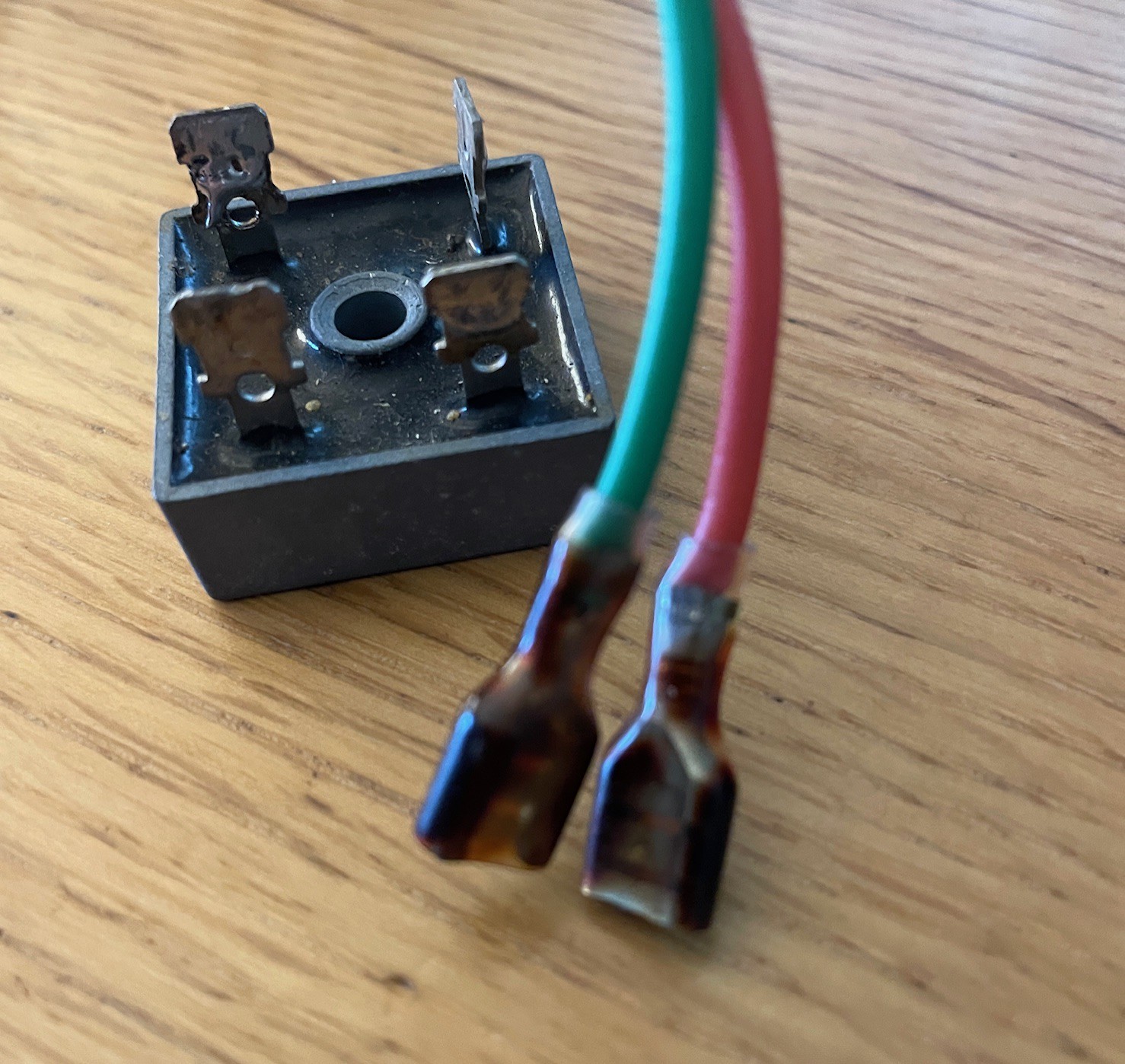@Dan K - where are your measurements taken - exactly - at the rectifier, on the route from rectifier to main reservoirs, or just after those caps..?
Any chance of a pic of the amp's internal wiring arrangement..?
[Nice work to check this! - just making sure if I or anyone else also tries similar - that we check like-for-like : ) ]
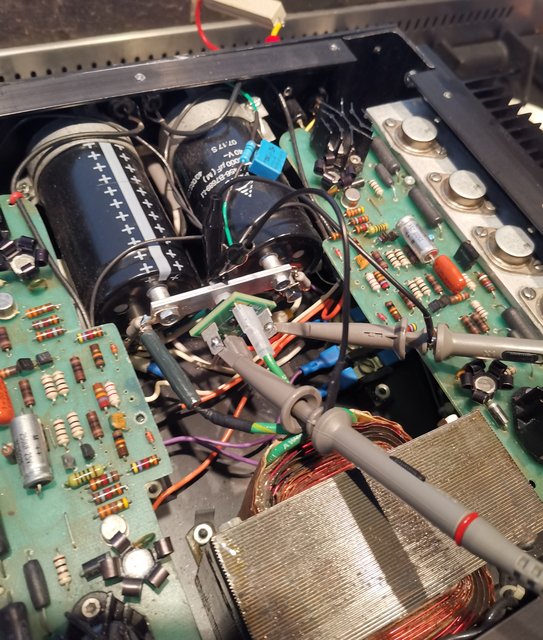
PSU is a CRC with a single rectifier and traffo centre tap


